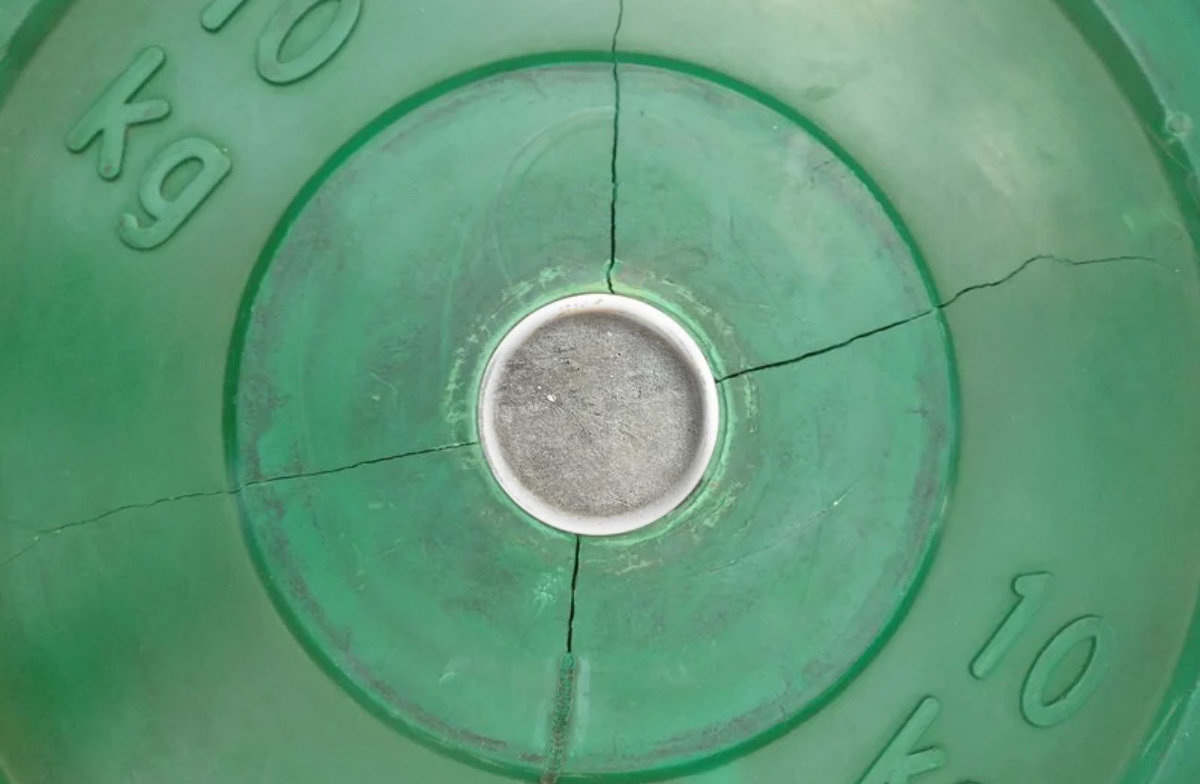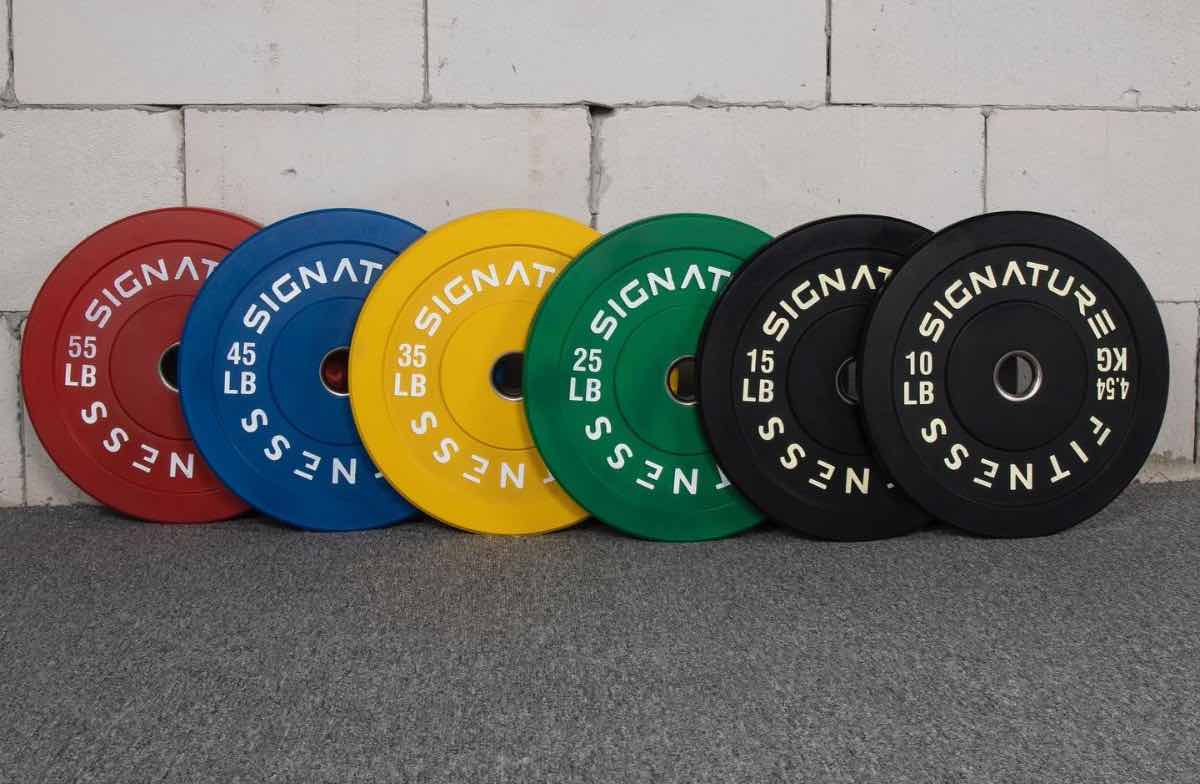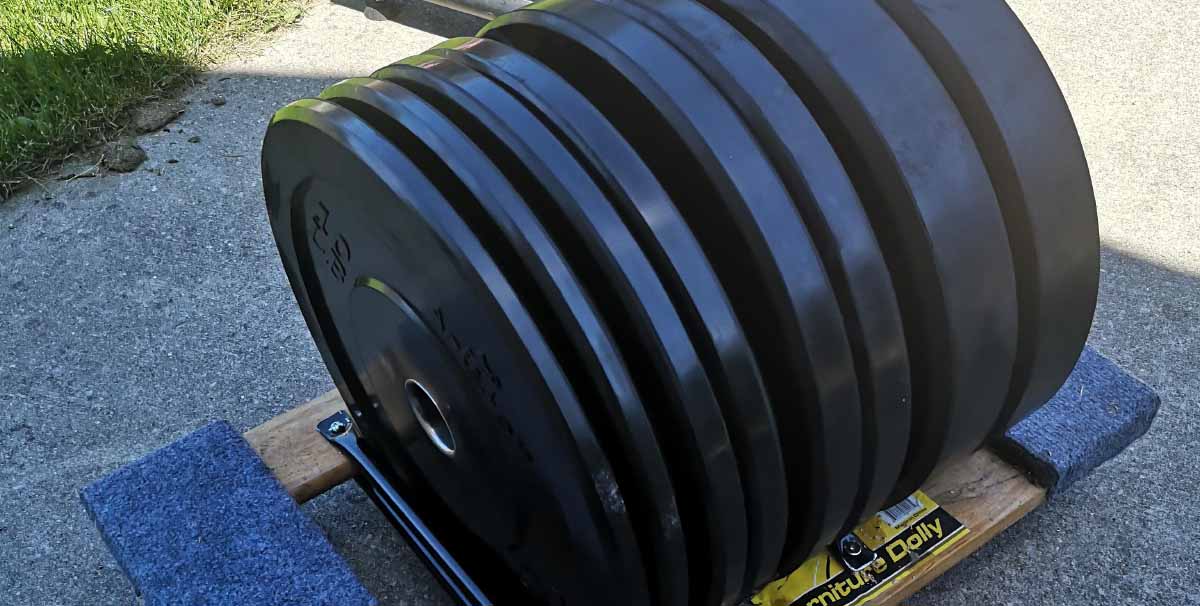Bumper plates are designed to withstand heavy use and prevent damage to the floor and the plates themselves. However, like any piece of equipment, bumper plates will eventually wear out and must be replaced.
So, how long do bumper plates last?
There are many factors that can affect the lifespan of bumper plates. However, on average, high-quality bumper plates can last anywhere from 5 to 10 years with proper care and maintenance. Higher-quality bumper plates can last up to 20 years with good care.
In this article, I will delve deeper into the factors that can affect the lifespan of bumper plates, provide tips on why bumper plates break and offer some insight into where bumper plates usually crack first.
Read on to understand how long bumper plates typically last and how to ensure you get the most out of your equipment.
Can Bumper Plates Break?
While bumper plates are designed to withstand heavy use, they are not indestructible. Many factors can contribute to bumper plates breaking or becoming damaged.
So, can bumper plates break? The answer is yes, and there are several reasons why this may happen.
Why do bumper plates break?

Wrong Gym Flooring
One of the most common reasons bumper plates break is due to improper or using the wrong type of weightlifting platform or gym flooring. Repeated impact with the wrong or poorly constructed surface can take a toll on both the plates and the floor.
The wrong type of flooring or a weightlifting platform that is poorly constructed can subject the plates to severe wear and tear, which can eventually cause them to crack or break.
It is recommended to use high-quality rubber flooring at least ¾ inch or 19mm thick to minimize the risk of damage to the plates.
Type of Use
The type of use might also impact the longevity of bumper plates. Bumper plates are more likely to break or sustain damage if used for activities that require dropping weight from a great height or involve many lateral impacts.
As a result, the plates may eventually develop stress fractures or perhaps completely break. To increase the lifespan of bumper plates, it’s critical to use them for the intended function and to minimize impact or stress.
Frequency of Use
The frequency of use can also affect how long bumper plates last. The more frequently they are used, the faster they will wear out.
It is important to monitor the condition of your bumper plates regularly and replace them when necessary to avoid any potential safety risks.
Type of Bumper Plates
The type of bumper plates can also affect their durability. Lower-quality bumper plates made from cheaper materials may be more prone to breaking or becoming damaged over time.
On the other hand, high-quality bumper plates made from top-quality rubber will be more durable and long-lasting.
Types of Bumper Plates
There are different types of bumper plates available in the market, each with its unique features and materials. They include:
Economy Bumper Plates
Economy Bumper Plates are the more affordable option, often made from virgin rubber. They have a thin center insert, which is why these bumper plates tend to wear out sooner than other types.
These virgin rubber plates are ideal for light lifting or home gym environments. They can last between 4-7 years with appropriate care and maintenance, although some have been known to endure for up to 12 years.
Crumb Rubber Bumper Plates
Crumb Rubber Bumper Plates are made from small pieces of recycled rubber, often from old tires. They are more durable than Economy Bumper Plates and have a higher density, so they take up less space on the bar.
Crumb Rubber Bumper Plates can withstand heavy use and are a good option for home and commercial gyms.
These types of weight plate can really take a beating lasting anything between 5-15 years or even more with proper care and maintenance.
Weightlifting Bumper Plates
Weightlifting bumper plates are the most expensive and high-quality type of bumper plates. They are made from virgin rubber and have a high density. They also have a thick center cap that won’t come off easily.
Weightlifting bumper plates are designed for high-level competitive weightlifting and can withstand repeated drops from overhead lifts. They are the most durable and long-lasting type of bumper plate and can last for years.
What Is The Average Lifespan Of A 10lbs, 25lbs, 45lbs Plate?

The lifespan of bumper plates can vary depending on several factors, including the type of plate, frequency of use, type of use, and maintenance.
Here’s a breakdown of the average lifespan bumper plates according to weight:
10lbs Bumper Plates
10lb bumper plates are typically thinner and denser than heavier plates.
They are often used for warm-up exercises or for beginners who cannot lift heavy weights yet. The average lifespan of 10lbs bumper plates can range from 2-8 years.
However, it’s important to note that 10lbs plates are more prone to cracking and breaking, especially if dropped from overhead lifts, due to their thinner design. Proper flooring, weightlifting platforms or drop pads can help to reduce the risk of damage.
25lbs Bumper Plates
25lb Olympic bumper plates are a popular choice for various exercises and are frequently used by intermediate lifters.
With proper maintenance, these plates have an average lifespan of 4-10 years.
Their thicker design and lower density make them less prone to breakage compared to 10-pound plates. However, consistently using 25lbs plates in high-intensity exercises, such as CrossFit or Olympic lifts, may increase the likelihood of damage.
45lbs Bumper Plates
The 45-pound plate is a standard weight for many exercises and is often used by advanced lifters.
They are thicker and have a lower density than lighter plates, making them more durable and less prone to damage.
The average lifespan of 45lbs bumper plates can range from 7-15 years. However, regular use in high-intensity exercises and repeated drops from overhead lifts can still increase the risk of damage.
Where Do Plates Normally Crack Or Fail First?
Here are some common areas where bumper plates tend to crack or fail first:
Edge of the Plate:
The edge of the plate is a common area where bumper plates tend to crack or fail first.
This is especially true for plates regularly dropped from overhead lifts, as the impact force can cause the edges of the plate to chip or break.
In order to avoid this, it’s important to use weightlifting platforms or drop pads and avoid dropping the plates on hard surfaces.
Center of the Plate:
The center of the plate is another area that can be prone to cracking or breaking. This is especially true for plates that are made from low-quality materials or that have been used excessively over time.
Over time, the repeated impact from being dropped can cause the center of the plate to develop cracks or weaken, ultimately leading to the plate breaking in two.
Metal Insert
Most bumper plates have a metal insert in the center to help them easily slide on and off the barbell.
If the insert is not properly secured or becomes damaged, it can cause the plate to get loose or even fall off the barbell during lifting, which can be dangerous for the lifter and those around them.
Rubber Coating:
While rubber is a durable material, it can still wear down over time, especially if the plates are regularly used in high-intensity workouts or on rough surfaces.
If the protective coating on the plate becomes damaged or worn down, it can cause the plate to crack or break. It is, therefore, important to inspect plates regularly for signs of wear and tear.
Frequently Asked Questions (FAQ’s)
Are Bumper Plates Worth It?
Bumper plates are ideal for high-intensity training sessions and Olympic lifting routines since they are designed to withstand repeated impacts.
When compared to traditional iron weight plates, these durable alternatives pose a lower risk of damaging floors or other equipment when dropped.
Considering these advantages, investing in bumper plates over traditional iron plates proves to be a worthwhile decision.
How do you maintain a bumper plate?
To maintain your bumper plates, it’s important to store them properly when not in use, keep them clean and dry, and inspect them regularly for signs of wear and tear.
Avoid exposing them to extreme temperatures, and do not drop them on hard surfaces.
Is it better to replace a bumper plate or repair it?
In general, replacing a damaged bumper plate is better than attempting to repair it.
While some minor damage can be repaired, such as a crack or chip on the edge of the plate, more serious damage can compromise the plate’s integrity and make it unsafe to use.
Can Bumper Plates Be Dropped On Concrete?
Bumper plates are designed to be dropped on hard surfaces, including concrete floors. However, it’s important to use them properly and avoid dropping them from excessively high heights.
Can I Leave Bumper Plates Outside?
Bumper plates are not designed to be left outside for extended periods. Exposure to sunlight, moisture, and extreme temperatures can cause the rubber to degrade and the metal inserts to rust.
How Do You Keep Bumper Plates From Rusting?
To prevent rust on the metal inserts of your bumper plates, keep them clean and dry. Avoid exposing them to moisture or humid environments; always wipe them down after using them.
How do you maintain a bumper plate?
To maintain your bumper plates, it’s important to store them properly, keep them clean and dry, inspect them regularly for signs of wear and tear, and avoid exposing them to extreme temperatures.




